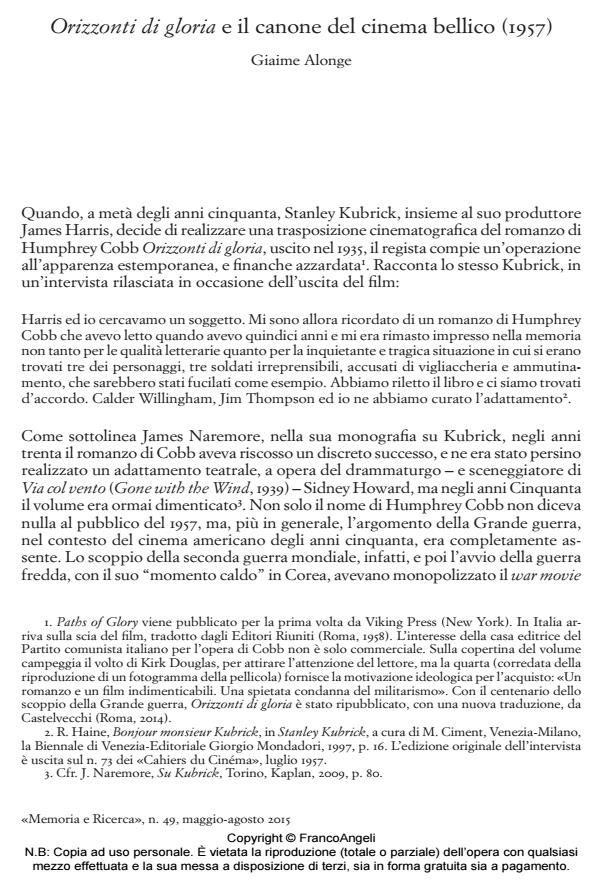Paths of Glory and the War Cinema Canon (1957)
Journal title MEMORIA E RICERCA
Author/s Giaime Alonge
Publishing Year 2015 Issue 2015/49
Language Italian Pages 16 P. 55-70 File size 195 KB
DOI 10.3280/MER2015-049005
DOI is like a bar code for intellectual property: to have more infomation
click here
Below, you can see the article first page
If you want to buy this article in PDF format, you can do it, following the instructions to buy download credits

FrancoAngeli is member of Publishers International Linking Association, Inc (PILA), a not-for-profit association which run the CrossRef service enabling links to and from online scholarly content.
Stanley Kubrick’s Paths of Glory (1957) is the first relevant American film on World War I after Howard Hawks’ Sergeant York (1941). Inevitably, World War Two, and the subsequent Cold War (with its "hot moment" in Korea), totally re-orienteered the war movie genre, that in the thirties had flourished mainly on the memory - mediated by the "war books boom" of the late twenties - of the Great War. When he chooses to go back to the 1914-18 conflict, Kubrick deliberately goes back to the pre-World War Two canon, epitomized by Lewis Milestone’s All Quiet on the Western Front (1930). But at the same time, Paths of Glory represents the beginning of a new canon. Telling the story of a grotesque court-martial trial in a first line French infantry division, Kubrick depicts the Great War as the quintessence of every possible mass mechanized conflict, posing the founding stones of a canon which is still productive today.
Keywords: Adaptation; Stanley Kubrick; militarism; pacifism; war movie; war novel.
Giaime Alonge, Orizzonti di gloria e il canone del cinema bellico (1957) in "MEMORIA E RICERCA " 49/2015, pp 55-70, DOI: 10.3280/MER2015-049005